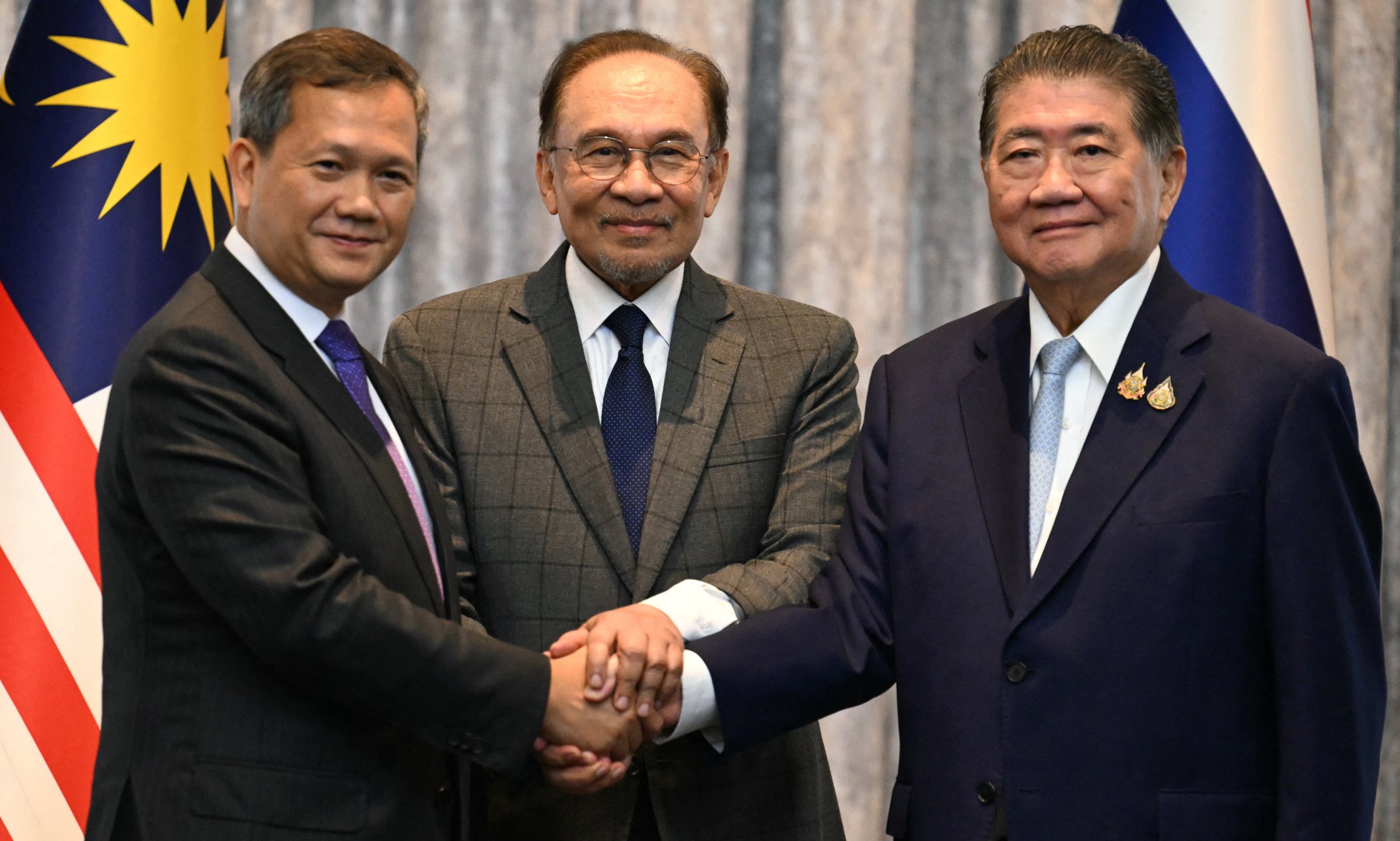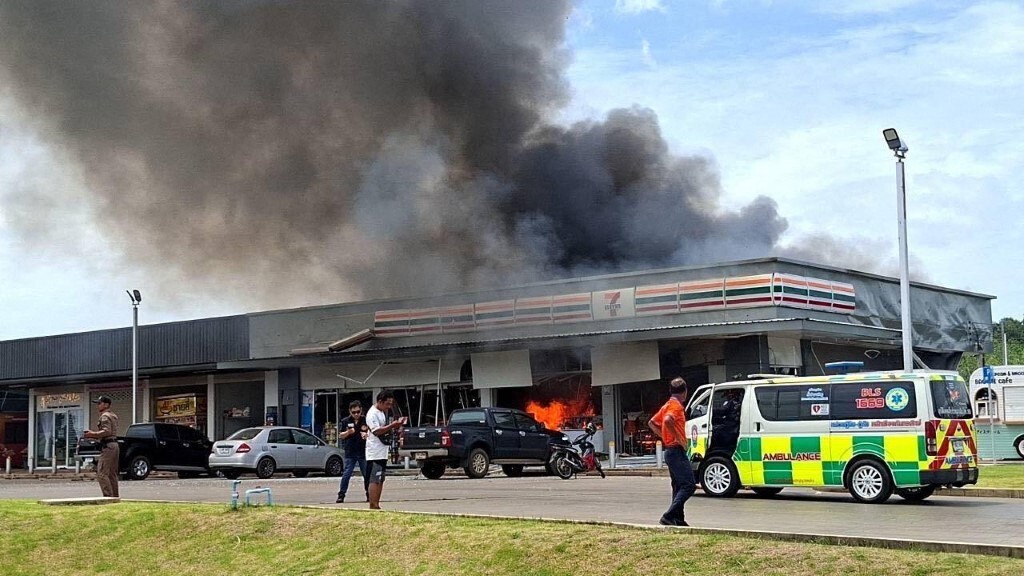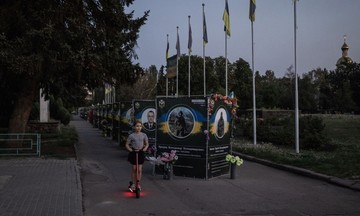Cambodia and Thailand reached an immediate and unconditional ceasefire agreement on Saturday after talks in Putrajaya, Malaysia, ending five days of border clashes that left at least 35 people dead and displaced more than 300,000 in both countries.
Cambodian Prime Minister Hun Manet expressed hope that the ceasefire "will facilitate improved conditions for bilateral exchanges to return to normal and create a foundation for de-escalating tensions between the two countries' armed forces in the future."
 |
Cambodian Prime Minister Hun Manet (left), Malaysian Prime Minister Anwar Ibrahim (center), and Acting Prime Minister of Thailand Phumtham Wechayachai (right) at a press conference on Saturday afternoon, 28/7. Photo: AFP |
Cambodian Prime Minister Hun Manet (left), Malaysian Prime Minister Anwar Ibrahim (center), and Acting Prime Minister of Thailand Phumtham Wechayachai (right) at a press conference on Saturday afternoon, 28/7. Photo: AFP
Experts suggest that the potential economic fallout played a significant role in motivating both countries to agree to the ceasefire.
Dr. Aat Pisanwanich, director of the Center for International Trade Studies at the University of the Thai Chamber of Commerce (UTCC), estimated that if the border conflict had persisted for at least a month, Bangkok and Phnom Penh could have incurred economic losses exceeding 60 billion baht (approximately USD 1.86 billion).
Specifically, Dr. Aat projected Thailand's losses at nearly USD 1.4 billion, equivalent to about 0.25% of its GDP, while Cambodia could have lost nearly USD 473 million, about 1.1% of its GDP.
For Thailand, he estimated losses from cross-border road exports to Cambodia would reach USD 634.2 million. Businesses in Thai provinces bordering Cambodia could also face losses exceeding USD 760 million, with almost 8,000 workers potentially unemployed due to the conflict.
While the fighting primarily occurred in the border region, it began to impact Thailand's tourism sector. On Wednesday, Thai authorities closed Phnom Rung Historical Park in Buriram province as a precaution, despite its location nearly 60 km from the border.
Phnom Rung is one of the most significant Khmer historical sites in Thailand, attracting many domestic and international tourists.
 |
A convenience store in Nong Ya Lat, Thailand, hit by Cambodian shelling on Monday, 24/7. Photo: AFP |
A convenience store in Nong Ya Lat, Thailand, hit by Cambodian shelling on Monday, 24/7. Photo: AFP
In Cambodia, Dr. Aat estimated that over 86,000 workers could become unemployed due to shortages of Thai goods, resulting in lost income of USD 255.4 million. An additional 94,520 workers might lose their jobs due to a decline in tourism amidst the conflict, causing nearly USD 190 million in lost tourism revenue.
Several countries advised their citizens against traveling to areas near the border, including popular ancient temples, in both Cambodia and Thailand during the five days of conflict.
Nearly 5,000 Cambodian workers also faced unemployment due to reduced investment, resulting in USD 30 million in losses. Dr. Aat warned that if the conflict had continued for two to three months, the economic damage in both countries could have doubled or even tripled.
Following the talks and ceasefire agreement on Saturday, Cambodia and Thailand agreed to resume direct dialogue at the Prime Minister, Foreign Minister, and Defense Minister levels, as well as to hold informal meetings between military leaders in the border region.
"Today's outcome demonstrates Thailand's desire for a peaceful resolution while remaining resolute in protecting its sovereignty and the lives of its citizens. We expect the agreement to be successfully implemented with goodwill from both sides," said acting Thai Prime Minister Phumtham Wechayachai.
Duc Trung (Nation Thailand, Thai Rath)












